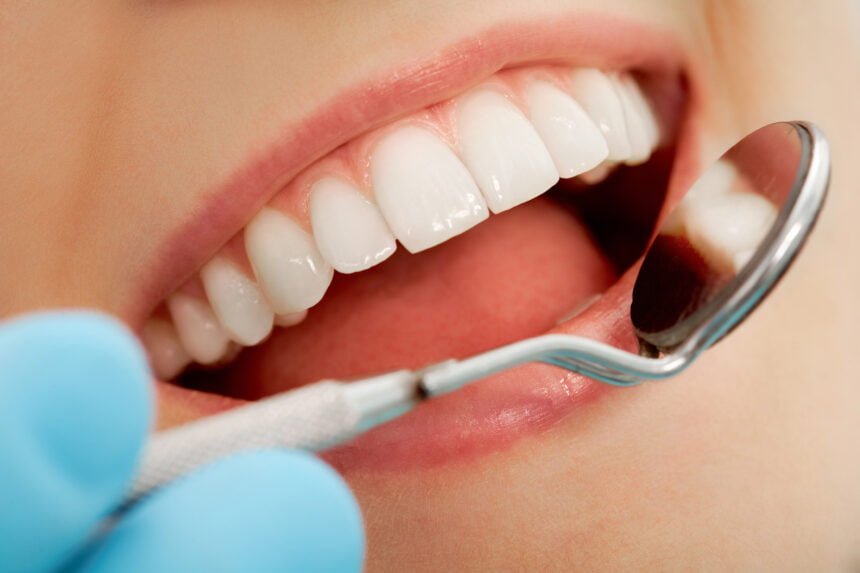The World Health Organization reports that around 280 million people around the world suffer from depression. A fair number of these people are depressed because they don’t like they way they look. The good news is that there can be some ways to help.
We recently published an article about some of the ways that beauty products can help with your mental health. Today, we are going to talk about another way that you can improve your mental health by feeling better about the way that you look. This is about the benefits of using teeth whiteners.
We talked about the benefits of treating tooth discoloration with teeth whiteners in another article. We are going to focus on some more specific benefits about them today.
Looking to brighten your smile without a trip to the dentist? The quest for pearly whites has become easier with various home teeth whitening kits on the market. The best teeth whiteners combine safety and effectiveness, ensuring you can trust the results. Whether you’re searching for budget-friendly options or top-notch professional systems, we’ve got you covered.
For those in a hurry, Crest’s whitening gel can lighten your teeth by three shades in just two weeks. If you have sensitive teeth, Spotlight Oral Care’s strips are a gentle yet effective alternative available on Amazon for £45. And let’s not forget the Philips Zoom! NiteWhite, priced at £115.95, a favourite among dentists for its professional-grade results.
Budget-savvy buyers will appreciate Molarclean’s advanced strips for only £6.99, proving you don’t need to break the bank for a whiter smile. Whether you prefer powders, gels, or LED kits, there’s a trusted and safe option out there to fit every need and budget.
What to Consider Before Whitening Your Teeth
Before you start whitening your teeth, it’s important to know about tooth sensitivity and enamel safety, as well as identifying what kind of stains you have. Here’s what you need to be aware of to make the best decision for your smile.
Understanding Tooth Sensitivity and Enamel Safety
Tooth sensitivity can be a significant concern, especially if you have had issues with it before. Whitening products that contain hydrogen peroxide can be effective but might also increase sensitivity. If you know this is a problem, look for products designed specifically to be gentle on sensitive teeth.
Enamel safety is another critical point. Your teeth enamel is the hard outer layer that protects against decay. Using products that are too harsh can damage this layer. It’s best to look for whitening options which emphasise enamel safety, such as those without high concentrations of hydrogen peroxide.
Consult your dentist before starting any whitening treatment. They can recommend safe products for your enamel and address any concerns you might have about sensitivity.
Identifying Your Teeth Stains
Knowing what type of stains you have will help you choose the most effective whitening method. There are two main types: extrinsic (surface stains) and intrinsic (deep discolouration).
Extrinsic stains are caused by food, drinks like tea and coffee, and habits like smoking. These stains are usually easier to remove with whitening toothpaste or strips. Regular brushing with a good whitening toothpaste can often reduce these stains.
Intrinsic stains are more stubborn and can be caused by factors like ageing, certain medications, or trauma to the teeth. These stains may require stronger treatments, such as professional bleaching by a dentist.
Understanding the source and type of your stains can guide you to the right product and help you achieve the best results without unnecessary damage to your teeth.
Choosing the Right Teeth Whitening Method
Finding the best way to whiten your teeth can be daunting with so many options available. Here’s what you need to know about choosing among at-home products, dental clinic treatments, and natural alternatives.
At-Home Whitening Products vs Dental Clinic Treatments
At-home whitening products often include kits with gels, trays, and strips. Popular brands like Crest and Colgate offer various options. These products can be convenient and cost-effective, but they might take longer to show results. They usually contain active ingredients like hydrogen peroxide or carbamide peroxide.
Dental clinic treatments provide professional teeth whitening. Dentists use stronger bleaching agents which can whiten your teeth in a single visit. This method is more expensive but offers quicker and more dramatic results. Some people may experience tooth sensitivity after these treatments, though professionals can provide products to alleviate discomfort.
Top Teeth Whitening Kits and Toothpastes
Several at-home kits and toothpastes are popular for their effectiveness and ease of use.
Teeth whitening kits often come with gels and trays that fit over your teeth. Look for products that contain carbamide peroxide for the best results. Some users see a noticeable difference in just a few weeks.
Teeth whitening toothpastes are another option. Brands like Crest and Colgate offer products that gradually brighten your smile. These toothpastes use mild abrasives to remove surface stains. They are best for maintenance rather than dramatic whitening.
Here’s a quick comparison:
Product Type Advantages Considerations
Whitening Kits easy to use potential sensitivity
Toothpastes are affordable but Not as effective
Natural Teeth Whitening Alternatives
For those seeking more natural options, several methods can help brighten your smile.
Oil pulling, using coconut or sunflower oil, is an age-old technique. Swishing oil in your mouth for about 10-20 minutes can help reduce bacteria and improve oral hygiene, though it doesn’t whiten teeth on its own.
Activated charcoal is another natural remedy. When used carefully, charcoal toothpaste can help remove surface stains, but it should not replace regular brushing with fluoride toothpaste.
Baking soda mixed with water is a mild abrasive that can help scrub away stains but should be used sparingly to avoid enamel damage.
Practical Tips for Long-Lasting Whiteness
A bright smile doesn’t just come from one-time treatments. Daily habits play a big role in keeping your teeth white over time.
Maintaining Oral Hygiene after Whitening
Proper oral hygiene is crucial. Brush twice a day with a fluoride toothpaste. Using an electric toothbrush can remove more plaque than a manual one. Floss daily to clean between your teeth where your brush can’t reach.
Rinsing with an antibacterial mouthwash can also help. After whitening treatments, switching to a sensitive toothbrush may reduce discomfort due to increased sensitivity.
Foods and Drinks to Avoid
Certain foods and drinks can stain your teeth. Coffee, tea, and red wine are common culprits. If you consume these, rinse or brush your teeth afterwards.
Avoid dark-coloured foods like berries and sauces. Opt for foods known to promote dental health, such as dairy products, apples, and celery. Consider using a straw when drinking staining beverages.
Regular Visits to the Dentist
Regular dental check-ups are key. Visit your dentist every six months for a cleaning and check-up. Your dentist can identify early signs of staining or issues after whitening treatments.
They may also offer custom whitening gel trays for at-home touch-ups. These trays are made based on unique impressions of your teeth for the best fit and results. Keep these trays clean and store them properly to use them for a long time.
Understanding Potential Risks and How to Mitigate Them
Teeth whitening can brighten your smile, but it’s important to be aware of possible risks and how to handle them. Below are some key points regarding side effects and when you should talk to your dentist.
Side Effects of Teeth Whitening
Teeth whitening can sometimes cause sensitivity and gum irritation. Sensitivity usually appears when the chemicals in whiteners penetrate the enamel, reaching the tooth nerves. This is more common with products containing hydrogen peroxide or carbamide peroxide.
Gum irritation occurs if the whitening product comes into contact with the gums. It’s a temporary issue but can cause discomfort. Always follow the product instructions to avoid this.
Pain or sensitivity can also result from overlooked dental issues. Customer reviews often highlight the importance of consulting your dentist to personalise your whitening treatment and minimise risk.
Using products designed for sensitive teeth can also help. Be cautious if you’re breastfeeding; consult a professional beforehand.
When to Consult Your Dentist
Consult your dentist before starting any whitening treatment. Dental professionals evaluate your oral health, which helps you choose safe products. If you experience persistent pain or sensitivity, stop using the product and contact your dentist.
Dentists can also recommend alternative methods or treatments tailored to your needs.
Some products may be safe for general use, but caution is advised if you have:
- Cavities
- Exposed roots
- Allergies to whitening chemicals
Consulting your dentist ensures the treatment is safe and effective for you. Make sure to communicate any concerns or side effects promptly.








